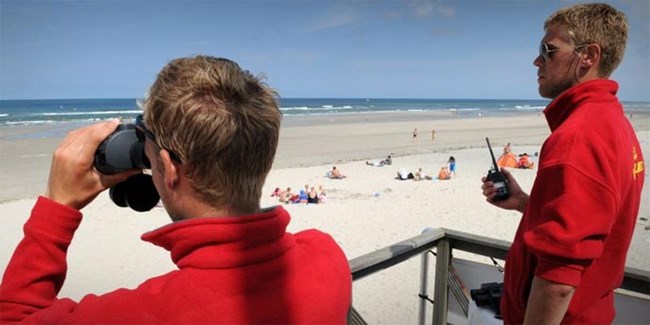
Exploring ocean, coastal, and Great Lakes national parks can be exhilarating, but it can also be dangerous. Whether you are boating, paddling, surfing, swimming, or otherwise immersing yourself in the water, safety is just as important as having fun.
Swimming
Many national parks across the nation offer great opportunities for swimming, and safety is essential for all ages when enjoying this activity. If the park you are thinking about visiting has lifeguards, make sure you swim when and where the lifeguard is present. If you are at a park without lifeguards, be sure you are completely qualified to be swimming there, and use the buddy system. Many parks' waters are prone to dangerous riptides or rip currents; always swim parallel to the beach until you are free from the flow of a riptide. Some parks have swimming locations that are particularly susceptible to changing environmental and weather conditions –in places like this, use sound judgment before entering the water, and stay alert.
Swimming in the ocean is not the same as swimming in a pool or lake. Wind, waves, the change of the tide, the slope of the beach, and other factors can cause strong currents to be present in the water even on the calmest days. Ocean conditions can change from day to day and from hour to hour. Before going in the water, spend a few moments watching the waves, and make sure you know the current conditions and have monitored the weather. Wave patterns are a good indicator of the presence of currents and of places where deep water and other "surprises" are located. Know what to expect before you go in the water. Some parks' visitor centers also can help you assess current ocean conditions. Below are some general safety tips:
- When available, swim at beaches patrolled by lifeguards.
- Always swim with a buddy, and have adult supervision for all children.
- Know the various types of ocean currents and weather conditions.
- Use US Coast Guard-approved flotation vests if you are a weak swimmer.
- Stay alert by checking the daily NOAA Rip Current Hazard Forecast and NOAA weather forecast.
- Avoid swimming where danger is present: in rough seas, in inlets, around piers, at night, or during thunderstorms or other extreme weather conditions.
Boating
When you are boating, weather, water, and wind conditions can change quickly, so being prepared for these unstable weather conditions is essential. Safety is a top priority for boating in any national park. To learn more about safe boating, visit these resources:
In addition, most individual park sites offer more locally specific information on boating safety. To learn more about boating safety at a certain national park, visit that park's website or contact its staff for more information.
Paddling
If you are paddling, be aware of what conditions are expected in the park. In areas of open ocean, paddling can be a high-risk activity that should not be undertaken alone, or by any novice, first-time, or inexperienced ocean paddler. Check the safety rules for any national park site you plan to visit and experience through paddling. Make sure to choose a form of paddling that is appropriate to your experience level –open ocean versus sheltered bays or wetlands, guided versus unguided, and so on –so that you can have the best possible experience exploring your coastal and ocean national parks.
Error in custom script module
Last updated: June 20, 2017
